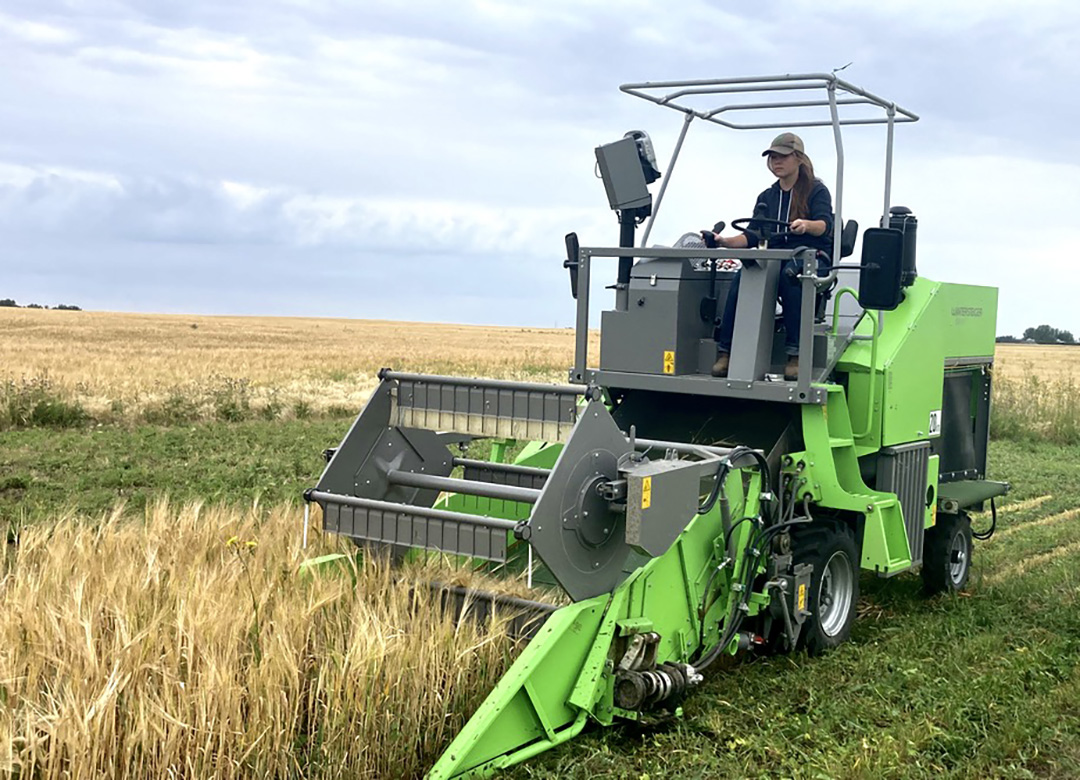
USask researchers aim to reclaim saline soils
Researchers with the University of Saskatchewan (USask) forage breeding team are looking to provide growers with better methods for managing saline areas.
By Kira GlasscockSoil salinity is an issue in many areas of Western Canada and seeding annual crops in these areas is often less economical due to limited crop production.
Working with USask forage breeder Dr. Bill Biligetu (PhD), graduate student Alex Waldner is studying the effectiveness of using companion crops to help establish saline-tolerant forages in saline soils.
“By evaluating establishment methods and forage mixtures we can determine methods to successfully seed forages in saline soils; and by assessing economic returns and ecological benefits we can provide reasons to convert saline soils to perennial forages,” said Waldner, a master’s student in the College of Agriculture and Bioresources.
A common challenge with establishing forages though is weed control, as forages in the seedling stage aren’t competitive against weeds.
“Many acres in Saskatchewan are affected by salinity, which can greatly limit crop production and leave these areas vulnerable to weed invasion from salt-tolerant weeds such as kochia and foxtail barley,” said Waldner, who grew up on a farm near Swift Current.
“Certain perennial forages can handle high level of salt, especially some grasses can compete well with weed species,” said Biligetu, Ministry of Agriculture Strategic Research Program Chair in Forage Crop Breeding. “Alfalfa is useful because it can lower the ground water table, preventing further salinization.”
The study is testing various forage mixtures—including the recently released high salt-tolerant CDC Salt King hybrid wheatgrass—seeded with and without barley as a companion crop, to determine if a companion crop helps to suppress weeds when the forages are in the seedling stage. Field tests are being conducted in the province at USask’s Livestock and Forage Centre of Excellence at Clavet, the Western Applied Research Corporation in Scott, and the South East Research Farm at Redvers.
“Based on our first year of data collection, we have found that each forage mixture established successfully in all three saline sites,” said Waldner. “We also determined that the forages seeded with a barley companion crop resulted in higher yields and significantly reduced the amount of weed pressure compared to forages seeded alone. However, the barley companion crop also reduced the amount of forage growth.”
The study will continue until 2024 with more data processing and analysis on soil microbial biomass, pollinator activity, NDVI drone imagery, forage quality, and economic analysis.
Waldner noted that with the decreasing amount of natural habitat in cropping landscapes, converting saline areas to perennial forages would offer numerous ecological benefits.
“My study only focuses on soil biological activity, pollinator activity, and weed suppression. However, there are many other benefits, such as beneficial insects, wildlife habitat, carbon sequestration, water quality, and many more. With the environmental concerns of today’s society, I feel this research will be imperative for improving the ecological function of our agricultural landscapes.”
This research is supported by the Saskatchewan Ministry of Agriculture through the Ag Demonstration of Practices and Technologies (ADOPT) program, Saskatchewan Cattlemen’s Association, Saskatchewan Forage Council, Mitacs, Saskatchewan Alfalfa Seed Producers Association, and Saskatchewan’s Agriculture Development Fund.
For more information and future updates on this research project, visit saskforage.ca.
